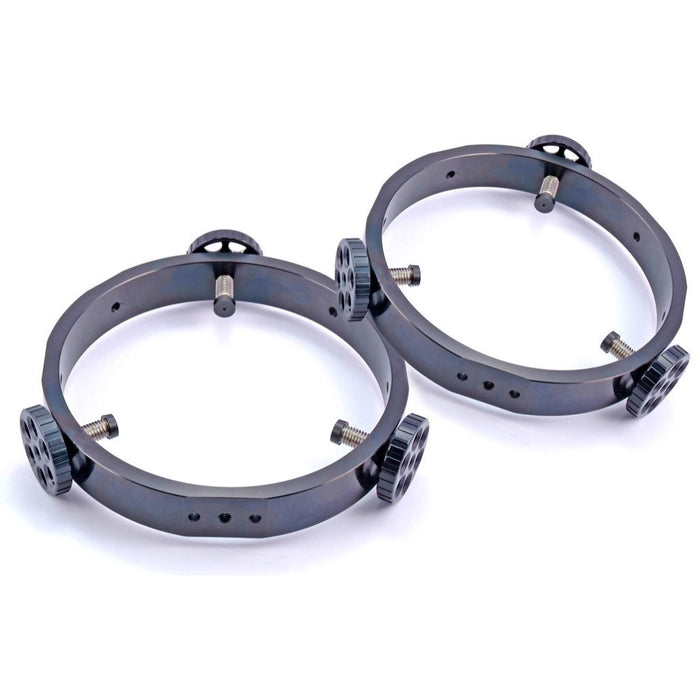
Baader Guide Scope Rings BP II - 110-160mm
Description
Contact us to know when we will receive our next ones!
Free Shipping on most orders above $350*

Free Shipping on most orders above $350*
Massive, solid, turned aluminium rings, width 28 mm, support surface with photo-threaded connection ¼ "and additionally 2 through-holes 5 mm diameter.
3 adjusting screws (M10) with 10mm Ø, ball bearing bearing surface made of V2A steel, covered with a hard rubber sheath (i.e. the screw pressure surface does not rotate during the adjustment of the telescope!). The guiding telescope is absolutely solid, non-slip and will not be scratched! A further four milled planar surfaces with a photo-threaded hole are installed on the outer diameter in order to be able to attach additional accessories to the rings on the outside or to connect several rings together!
The basic concept of guidescope rings remains unchanged since the dawn of the telescope. They consist of a simple ring with three radial machine screws arranged at 120 degrees, used to shift an auxiliary telescope to be aligned co-axially with the main instrument (or intentionally off axis for guidescope use). In this simplest configuration the three hard-pointed alignment screws bear directly against the tube of the auxiliary telescope, causing inevitable damage to the telescope's finished (painted) surface.
Surprisingly, most currently available rings have evolved little from this basic design, and subject your valuable equipment to repeated damage. The simplest and most inexpensive solution, taken by some manufacturers, is to add a small plastic cap or pellet inserted into the tips of the adjusting screws. While this significantly reduces the damage, the rotation of the plastic screw tip against the telescope can still noticeably abrade a painted finish (particularly if there is any grit embedded in the plastic tip). Also, often these plastic tips are made of too small a diameter, which result in high clamp loads that can permanently dent a guidescope tube.
The solution for this problem lies in enabling the plastic tip to freely rotate, so that as the clamp screw is tightened, the tip remains stationary relative to the telescope tube surface. The clamp screws on our guidescope rings are designed in just this way. Each clamp screw incorporates a large 12mm diameter nylon tip, in order to spread the clamp force and prevent permanent denting of a telescope's thin wall tube. The nylon tip is mounted onto the flanged head of a machined brass spindle, which inserts into a lubricated bore in the tip of the large diameter stainless steel clamp screw. The net result is a rigid, truly no-marr adjustable guidescope ring.


Guidescope rings BP I (2 pc) With 6 large handknobs with screw and ball bearing tips For tube diameter 60 - 120mm Baader Planetarium - Guiding tub...
View full details10/17 - Revised Version: with significantly more mounting options than the predecessor plate, which could only hold our guidescope rings Mounting...
View full detailsMultipurpose Quick Release III (MQR III) 7x50 for all 50mm finderscopes with diameter of 62mm. Shipped with MQR IV guidescope rings, mounting plat...
View full detailsMultipurpose Quick Release IV (MQR IV) 9x60 for all 60mm finderscopes with diameters of up 72mm. Shipped with MQR IV guidescope rings, mounting pl...
View full detailsIf you want to install a guide telescope in parallel to the main one, guide rings offer the simplest and cheapest solution to make this. The Guide ...
View full details